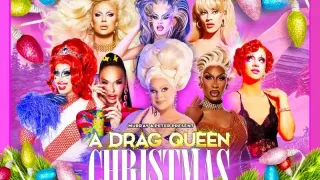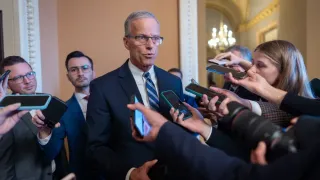
6 hours ago
Gap’s Holiday Ad Celebrates Diversity Amid Culture War over Fashion and Identity
READ TIME: 3 MIN.
Gap’s latest holiday advertisement, launched in early November 2025, is generating significant attention for its bold embrace of diversity and individuality. The campaign features KATSEYE, a multicultural girl group with members of Filipino, South Korean, Swiss, and American backgrounds, dancing to Kelis’ iconic track “Milkshake.” This casting and creative direction mark a clear celebration of global representation and inclusive messaging, a hallmark of Gap’s recent branding efforts . The campaign quickly went viral, resonating with audiences for its energy and joyful depiction of young women from varied backgrounds, all styled in Gap’s signature denim.
The timing of Gap’s new campaign is especially notable, coming on the heels of an American Eagle advertisement featuring actress Sydney Sweeney. That ad, which used the phrase “great genes” in a play on words involving Sweeney’s blonde hair and blue eyes, drew criticism for echoing language historically associated with eugenics and exclusionary beauty ideals. The controversy intensified when prominent conservative figures, including former President Donald Trump, publicly praised the American Eagle spot, interpreting it as a rejection of diversity, equity, and inclusion initiatives . Social media platforms erupted with debate, as many viewers accused American Eagle of promoting outdated and exclusionary standards, while others defended the ad as a harmless pun .
In stark contrast, Gap’s ad was widely celebrated for its inclusive casting and positive energy. Fans and consumers praised the brand for showcasing a range of identities and backgrounds, with TikTok users and online communities recreating the dance and expressing support for the campaign’s message. Many observers noted that Gap’s approach feels especially relevant in a climate where diversity in advertising is increasingly politicized .
For many in the LGBTQ+ community and other marginalized groups, the significance of such campaigns extends beyond the products themselves. Representation in mainstream advertising can contribute to a sense of belonging and validation, particularly for individuals who have historically been excluded from media narratives. Gap’s conscious choice to feature a diverse ensemble in a joyful, affirming context sends a message that all identities are worthy of celebration and visibility .
Academic experts have also weighed in on the broader implications of these advertising choices. According to Alaina Bartel of Case Western Reserve University, contrasting campaigns like those from Gap and American Eagle reveal much about shifting beauty standards and the intersection of fashion, feminism, and identity in 2025. Such moments highlight the ways in which fashion brands are navigating complex cultural and political landscapes, with their choices reflecting—and shaping—public debates about inclusivity and representation .
Gap’s campaign arrives at a time when corporate diversity initiatives face mounting pressure from political and social movements seeking to roll back gains in representation. The success of the KATSEYE campaign, both in terms of public reception and brand visibility, demonstrates that inclusive marketing can be both socially impactful and commercially successful . The ongoing debate over these ads underscores the high stakes involved, as every casting decision and creative choice becomes a potential flashpoint in the broader cultural conversation.
For LGBTQ+ people and allies, Gap’s holiday ad is more than just a seasonal promotion—it’s an affirmation that diversity is not only celebrated, but essential to the stories brands tell. As the public continues to engage with and respond to these campaigns, the fashion industry’s approach to representation remains a vital topic at the intersection of commerce, culture, and identity.






